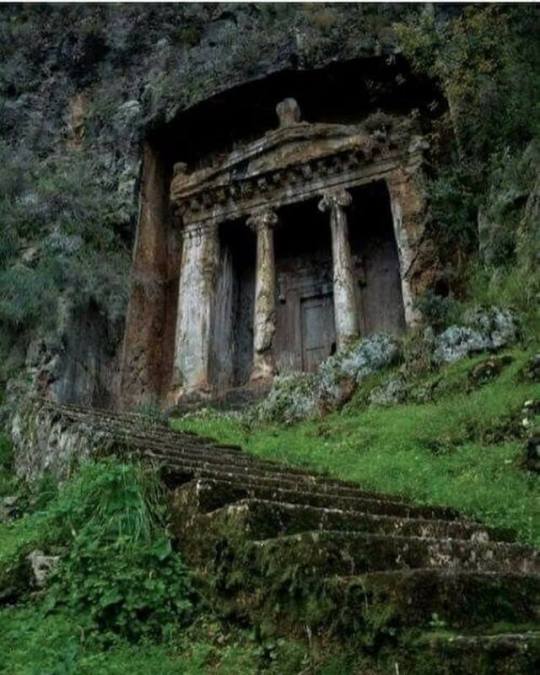Photo
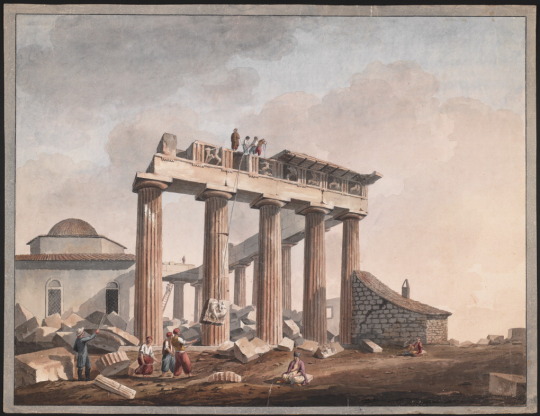

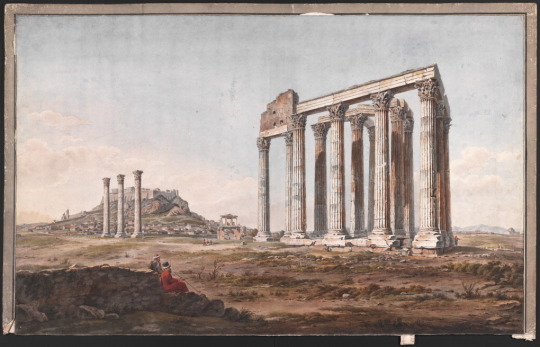
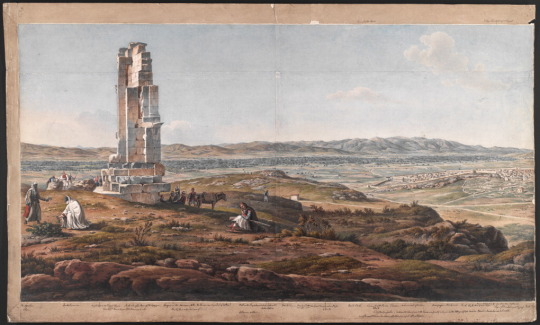
“Almost every rock, every promontory, every river, is haunted by the shadows of the mighty dead,” wrote the English antiquarian Edward Dodwell of his travels in Greece in the early 19th century.
Watercolors by Edward Dodwell and Simone Pomardi from the vast archive of the Packard Humanities Institute are featured in the new exhibition Greece’s Enchanting Landscape at the Getty Villa.
Dodwell was present in Greece during what proved to be a fascinating and complex phase in the history of classical archaeology, as antiquarians and scholars–men of Dodwell’s ilk–came to the country extolling the grandeur and nobility of its ancient past, seeing what they wanted to see, and, in some cases, taking what they wanted to take.
Curator’s Essay: “A Great Passion for Old Stones and Walls”
913 notes
·
View notes
Photo

A statue of the Greek muse Thalia, probably James Anderson (British, 1813-1877)
936 notes
·
View notes
Photo

Guardian Statue of Tutankhamun
This life-sized statue of King Tutankhamun was one of an identical pair that once flanked the entrance to the burial chamber and acted as guardians for the tomb and as Ka, or spirit, statues.
Made of wood, the statue is covered with black resin and the clothing made of gold. Tutankhamun is depicted wearing a short kilt, sandals, a large necklace and bracelets, and holding a mace and a long staff. The head is covered by the Nemes headdress and the forehead is protected by the uraeus, the cobra emblem of royalty. The eyebrows, rims of the eyes, and sandals are made of bronze
From the Tomb of Tutankhamun (KV62), Valley of the Kings, West Thebes. Now in the Egyptian Museum, Cairo. JE 60707
Photo: Sandro Vannini
651 notes
·
View notes
Photo
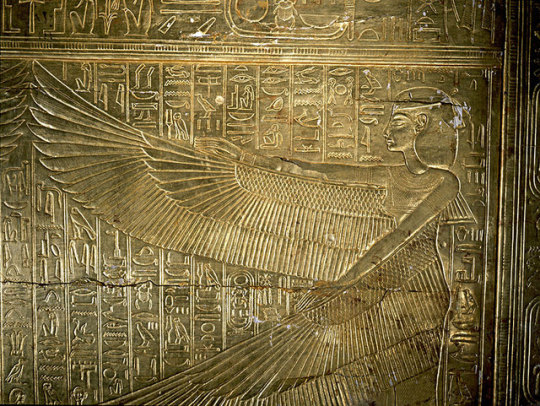
Goddess Nephthys with her outspread wings
A detail of the second largest shrine of Tutankhamun. The surface is decorated with texts and vignettes from the Book of the Dead. The goddess Nephthys as a woman with falcon wings offering protection.
From the Tomb of Tutankhamun (KV62). Valley of the Kings, West Thebes. Now in the Egyptian Museum, Cairo. JE 60666
2K notes
·
View notes
Photo
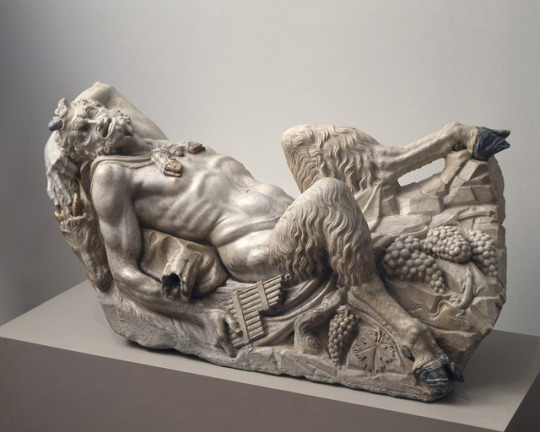
Reclining Pan Statue, 1535
attributed to Francesco da Sangallo (Italian, 1494-1576).
In this sculpture the satyr Pan reclines on a rocky base amid grape clusters and vines. His left hand clutches a goatskin called a nebris that he wears around his neck. Such details, together with the small salamander carved amid the rocks, evoke a rustic scene befitting Pan, the half goat-half human god of the woods, fields, and flocks known for his lecherous pursuits.
The reed pipe, or syrinx, in Pan’s right hand is an allusion to the maiden Syrinx, who was changed into a patch of reeds to escape the satyr’s advances. Francesco da Sangallo carved this sculpture from a recycled piece of ancient marble and it once served as a fountain; its water spout is still visible at the mouth of the sack above his right arm.
The Saint Louis Art Museum, Louis, Missouri.
2K notes
·
View notes
Photo

Chalcedony scaraboid, Metropolitan Museum of Art: Greek and Roman Art
Purchase, Joseph Pulitzer Bequest, 1942 Metropolitan Museum of Art, New York, NY
Medium: Chalcedony
634 notes
·
View notes
Text


~ Mosaic of a Gazelle in a Medallion.
Culture: Roman
Date: A.D. 1st-2nd century
Medium: Stone and mortar
1K notes
·
View notes
Photo
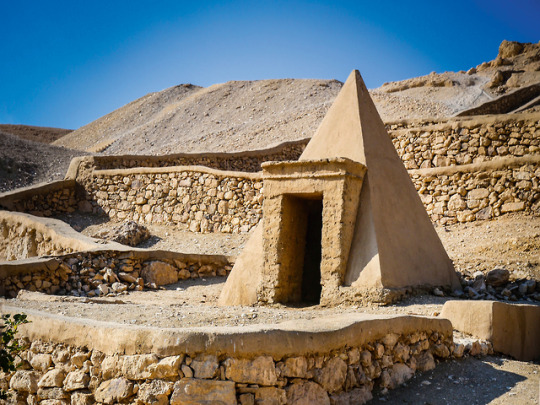
Pyramid Tomb at Deir el-Medina
Mini pyramid tomb at Deir el-Medina: “The Workers” Village on the West Thebes, 13th century BC. Deir el-Medina was the home of the artists, craftsmen, and workers who built, and ornamented the royal and private tombs of the Kings and Queens of Egypt.
988 notes
·
View notes
Photo

Relief with Birds in the Papyrus Thicket, Metropolitan Museum of Art: Egyptian Art
Gift of Egypt Exploration Fund, 1906 Metropolitan Museum of Art, New York, NY
Medium: Limestone, paint
350 notes
·
View notes
Text

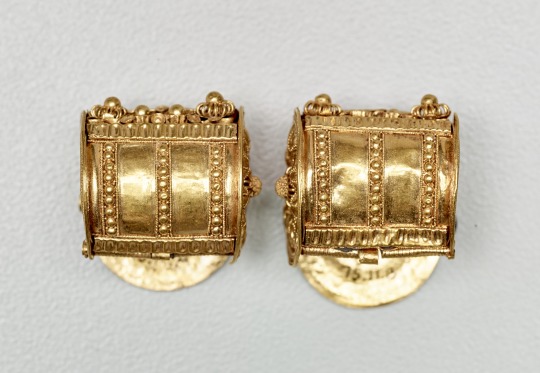

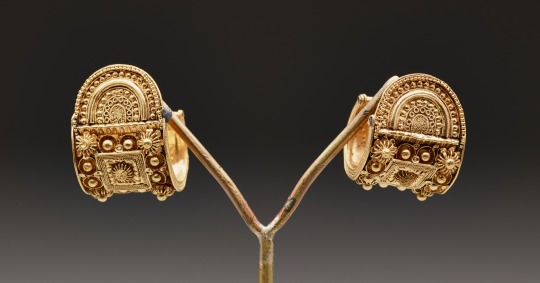
~ Pair of "a bauletto" type earrings.
Culture: Etruscan
Date: ca. 500 B.C.
Medium:Gold, openwork, repousse, filigree, granulation.
1K notes
·
View notes
Photo

Group Statue of Ramesses III with Horus and Seth
The group represents King Ramesses III, the god Horus and the god Seth. The three statues are standing and are all approximately the same height. The statue of the king is between the other two, which are represented in profile.
Ramesses III is wearing the white crown of Upper Egypt with the royal cobra on the front, a wide collar of many rows, and the royal pleated kilt, the shendyt, with a long belt hanging down to the bottom of it. He is holding the ankh sign of life in his right hand and the roll of power in his left hand. His left leg is forward.
The statues of the gods, Horus and Seth, are in the same posture with the left leg forward; they are each holding the ankh, and wearing the Egyptian pectoral and the shendyt kilt. Each god has placed one hand on the crown of the king, performing the Coronation of Ramesses III.
Granite, from Medinet Habu. New Kingdom, 20th Dynasty, reign of Ramesses III, ca. 1186-1155 BC. Now in the Egyptian Museum, Cairo. JE 31628
579 notes
·
View notes
Photo

The Roman theatre in Aspendos, Turkey.
690 notes
·
View notes
Text
Pelias, king of Iolcos, stops on the steps of a temple as he recognises young Jason by his missing sandal; Roman fresco from Pompeii, 1st century CE.
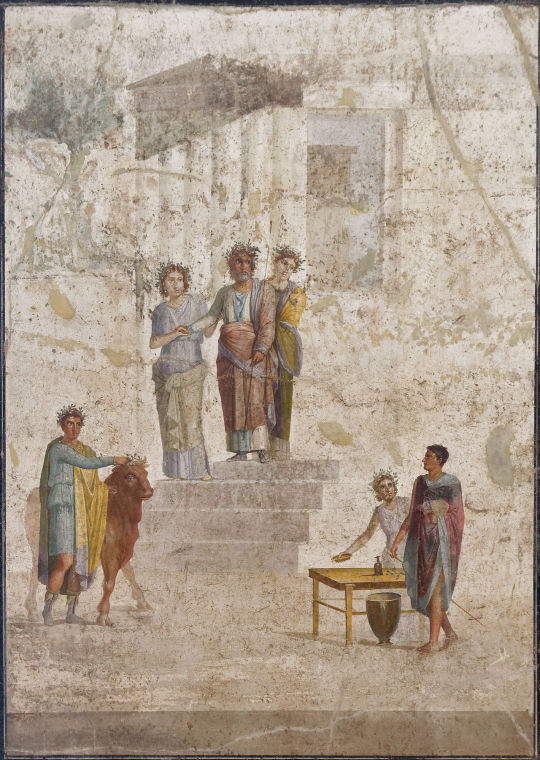
238 notes
·
View notes
Text

Glazed Wall Panel from Fort Shalmaneser
Fort Shalmaneser, Nimrud (Iraq). Reign of Shalmaneser III, 858-824 BCE.
284 notes
·
View notes
Photo
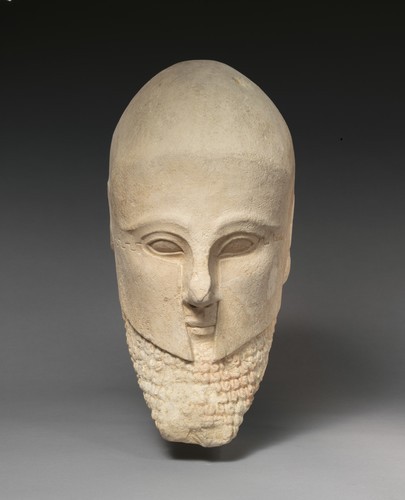
Limestone bearded head with a Corinthian helmet, Metropolitan Museum of Art: Greek and Roman Art
The Cesnola Collection, Purchased by subscription, 1874–76 Metropolitan Museum of Art, New York, NY
Medium: Limestone
519 notes
·
View notes
Photo
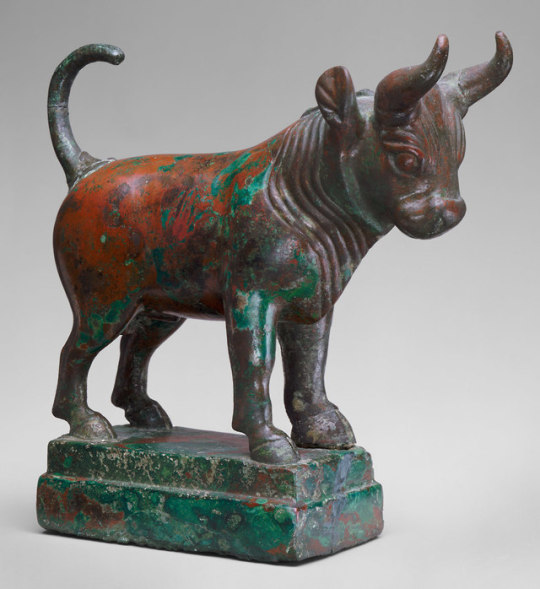
Standing bull, 1st millennium B.C., from Southwestern Arabia. Medium: Bronze
Bronze castings of large sculptures, as well as smaller objects, were made through most of the first millennium B.C. and the early centuries A.D. in southwestern Arabia. Among the types of animal images, bulls—a symbol of strength and potency—are the most common and can be found on funerary stelae, seals, and sculptures of the period.
The Met
329 notes
·
View notes
